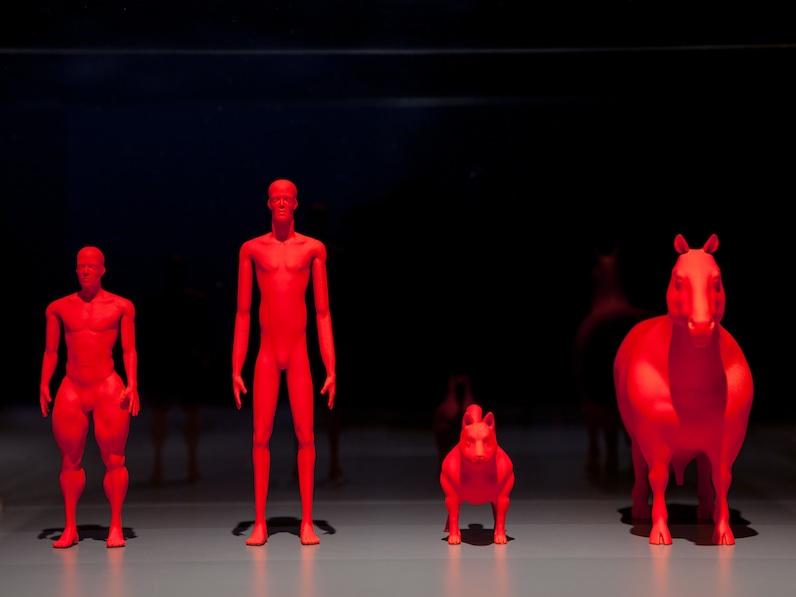Speculative Everything: Design, Fiction, and Social Dreaming - review
by Anthony Dunny & Fiona Raby, MIT Press, £19.95

Review by Rebecca Ross
Speculative Everything: Design Fiction and Social Dreaming (MIT Press 2013) by Anthony Dunne & Fiona Raby is accessibly written, thoughtfully organised, and generously infused with a thoughtful selection of images. It functions as a missing manual or annotated bibliography to most of Dunne & Raby's previous exhibitions, texts, and objects, given that not everything always gets interpreted, contextualized, or mobilised in the way that its originators may hope. Dunne's 1999 book Hertzian Tales had been a game changer within the design world, bravely provoking a repositioning of what it meant, and what it could mean, to identify as a designer. Their most recent book will be most usefully encountered in the setting of design education, as a lucid exemplar of how to pursue and enact a critical position through practice or as a foil to an un-reconstructed market led approach. In a departure from earlier writing, Speculative Everything conforms to the desires of a world in which despite how much critics of a certain stripe like to dismiss TED, legitimately and for sport, TED talks have a significant impact.

From 'United Micro-Kingdoms', Communo-Nuclearist Train. Courtesy Dunne & Raby. Photo: Tomasso Lanza
Perhaps deliberately pitching to that broader TED watching audience Dunne & Raby make the case for design as having an important role to play in disturbing the determinism and complacency that often surrounds scientific and technological advances. This comes through at best for example, in 'Huggable Atomic Mushrooms' (2007-08) or 'Designs for an Overpopulated Planet' (2010). In both projects they deploy distinct objects that assault the senses with crucial but too often ignored contradictions of contemporary culture. In 'Designs for an Overpopulated Planet', they activate an explicit encounter with our planet's risk of overpopulation by partially materialising a series of wearable augmentations to the human body that would maximise its capacity for foraging. The green plastic forms, projected into an imagined but not unrecognisable future photographic environment, concurrently evoke fascination and discomfort.

United Micro Kingdoms' Digiland.Courtesy Dunne Raby. Photo: Tomasso Lanza
Their most recent project, 'United Micro-Kingdoms', exhibited at the Design Museum last summer and discussed in the final chapter, tests the applicability of the speculative futures method to what they label 'big thinking' about whole socio-technical-environmental systems. They articulate a future in which the UK is divided into four principalities with distinct political leanings that are expressed through variances in the design of their technological, in particular transport, infrastructure. Communo-nuclearists live all together on an autonomous 3- kilometer long train resembling a mountain range that never stops. Anarcho- evolutionists subsist on the core strength of the human body. They adapt their genetic profiles to sustain travel, for example, by large group bicycles powered by members with extremely large thigh muscles represented in the exhibition as bright red figurines (see main picture).

From 'Designs for an Overpopulated Planet', Augmented digestive system and tree processor. Courtesy Dunne & RabyDunne &
Raby are right to push their audience to grapple with the fact that much is at stake right now. They argue that although mass culture usually portraits technological change as a singular vector, there remains open a wider more complex range of possible futures than most individuals, whether optimistic or cynical in temperament, allow themselves to envision or express. At the scale of the region or nation state, however, certain intellectual shortcomings of this approach reveal themselves. Dunne & Raby, having engaged in funded research collaborations with engineers and bio-scientists, incorporate an in-depth understanding of the technologies involved in their proposals. At a talk given at the V&A marking the launch of their book, Raby was careful to point out that their vehicle designs are 'not purely fictional, possible and engineer-able'. However, it neglects to engage in such detail with the gravity of our present culture's deep emebeddedness in institutions, such as those of advanced capitalism, which a concept such as Anarcho-evolutionism implies are plausible to overturn.
It may well be possible with the right amount of the right kind of investment to produce zero carbon footprint bio-fuel powered cars through farming. However, the question of whether we should or how we might ever do so is far more embroiled in complexities of class, culture and politics. In their assertion of a rich but ultimately narrow techno-scientific imaginary, Dunne & Raby risk inadvertently perpetuating a dangerously over-simplified understanding of social change. Speculative Everything does allude to a range of approaches, including literature and anthropology, but these remain passive. In the production of humanity's future, design has the potential to contribute far more as a productive interface between conceptual and market-based practices than to accept the pre-eminence of engineering and science, in relative isolation from other forms of expertise, as a given.












